


Built in 1585, Kronborg Castle is located at the northeastern point of Zealand Island at the narrowest point between Denmark and Sweden.
Kronborg replaced a fortress named "Krogen" erected on these premises in the early part of the 15th century.
The extant castle, kept in a typical Renaissance style, stem from 1639 after most of the original structure had been consumed by fire a decade earlier.


The castle is located at the narrowest point of Øresund, the sound between Denmark and Sweden.
The distance between the coastlines is a mere 4 km, giving the castle an excellent position to control shipping into the Baltic Sea to the south.
Sweden is clearly visible in the background right.
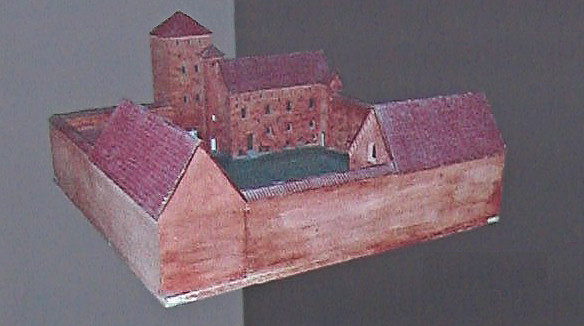

Model of "Krogen", the original fortress erected by the Danish King, Eric of Pomerania, on the premises in the year 1426.
The King's purpose in building "Krogen" was to control access to the Baltic Sea and hence enable him to collect passage dues as a percentage of the cargo value carried by the vessels.


A lighthouse has been installed in the northeastern tower to assist captains navigate the narrow strait.
Note the still fully functional cannons on the bastion.


The military routinely fire the cannons to ensure they are ready to defend the kingdom against marauding vessels or pirates.


The cannons are fired -nowadays presumably at some foreign vessel attempting to collect transfer pricing dues.
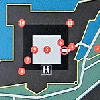

No photo safari is complete without a map. This one outlines all the interesting points to see.
The black square between the bastions is the castle itself. Note the inner- and outer moats.
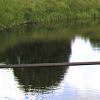

Tourists at the peaceful, outer moat.


An idyllic cobblestone covered path leaves from the outer moat to the inner moat, barely visible in the background.


Main entrance through the bastion and into the castle grounds proper.
The entrance was constructed in year 1664 and has remained intact apart from a few restorations.
The bridge in front spans the inner moat.
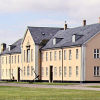

During the 19th and into the first part of the 20th century, Kronborg was under control of the military.
In the center back is the building reserved for the commandant of the castle.


Peaceful alley between the military barracks in the warm afternoon sun.


The so-called trumpet tower along the center of the main annex.


The beautiful Renaissance decoration stand out in all the structures.
This tower is nicknamed "the Pigeon Tower".
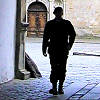

The decorated access gate to the inner courtyard.


Access doors to the casemate network under the castle from inside the courtyard.
This entrance was built in 1585. Note the elaborate decorations as well as the copper drainage pipes.

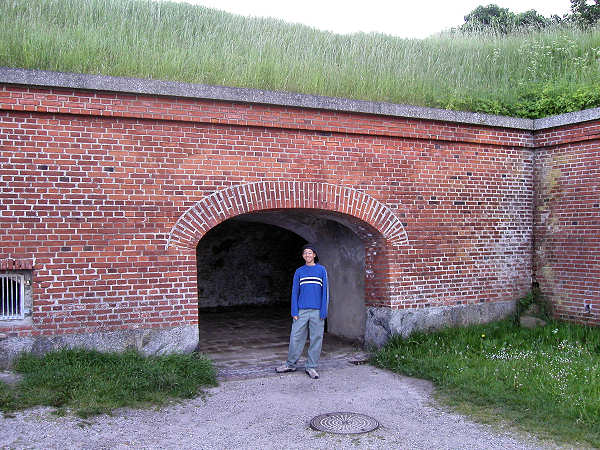
Extensive casemates run underground -both under the fortifications as well as under the castle proper.


A section of the casemate network -note the branches.
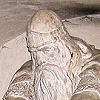

"Holger the Dane", aka. "Ogier the Dane", has been resting in the casemates under Kronborg with his faithful sword, Curtana, since 1909.
According to legend, he shall awake and defend the Kingdom of Denmark if its existence is threatened by foreign powers.
The myth of Holger the Dane paradoxically has its origin in 11th century France.


Time for some entertainment.
The navy marching band delivers the music -actually, they played well.
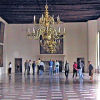

Let's go inside the castle.
This is the restored ballroom on the second floor.
To allow for more space an inserted floor had halved the height of the ballroom, but this has been removed and the room brought back to its origin.


A corner fireplace dating back to the year 1603 and still functional.
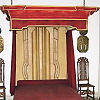

A red velvet canopy bed, with golden backdrop.
Note the Chinese vases on top of the cabinet left.
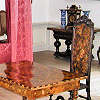

And a red satin four-poster bed next to some exquisite office furniture on which to write your diary before retiring for the night.


Many of the interior walls of the castle are covered with antique and rare tapestry.
This one depicts the birth of Jesus Christ with notations in the gothic language.


Lest we not forget that the great English writer, Shakespeare, immortalized Kronborg Castle by casting his play "Hamlet, Prince of Denmark" at this castle, named Elsinore.
The tragedy has been performed inside the castle premises many times, latest in 2009 with Jude Law as Hamlet.
'To be, or not to be -that's the question;'


But Kronborg premises is also well known for its great fishing opportunities.
The sea bed drops off quite steeply so fishing from the shore rocks suffices to make super catches.
Note the two anglers a little further back from the camera.





